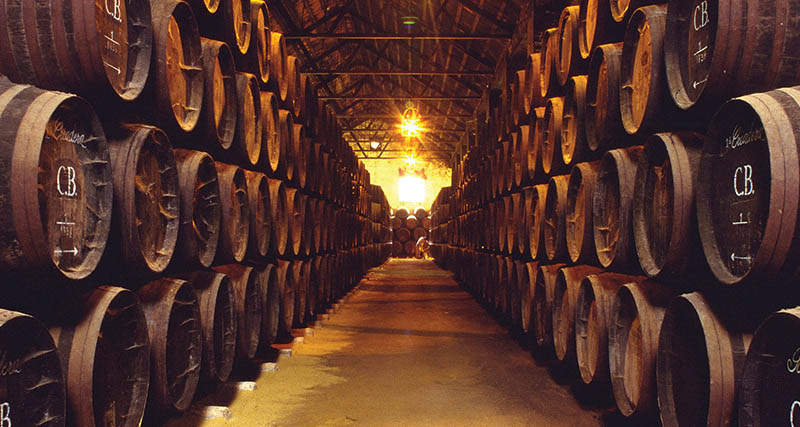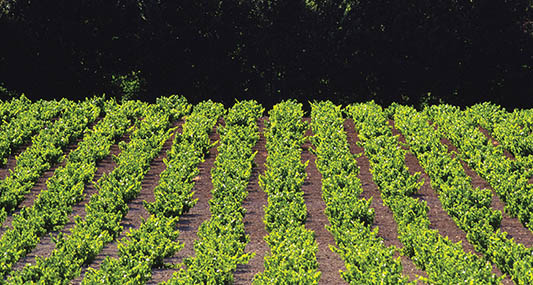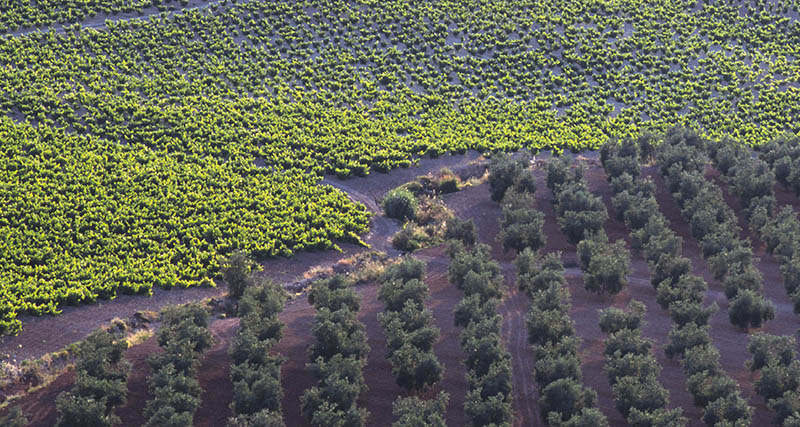


The Alvear family has its roots in the mountains of Burgos, dating back to the early 16th century. After relocating from Rioja to Montilla, just south of Cordoba, in the late 17th century, Juan Bautista García de Alvear y Garnica married a Cordobese noblewoman, and several years later, the couple had their first son, Diego de Alvear y Escalera, the founder of Bodegas Alvear in 1729. Over the course of the following decades, Diego and his son Santiago became some of the largest landholders in the city, and the bodega began exporting to England in the late 19th century. One of Diego's most famous heirs was Diego de Alvear y Ponce de León, who combined his winemaking career with a successful military and political career, establishing the family's political roots in Argentina.
Alvear is Spain's oldest continuously operated family-owned winery and the oldest winery in Andalucía, making them the oldest company for the production of vinos generosos or "sherry style" wines in Spain. The family's rich history and the founding of their bodega almost 300 years ago make them one of Spain's most historic families.
Why use the term "sherry style" and not sherry, then? While most consumers and many of the trade understand Alvear as a sherry producer, the bodega and family's vineyards are not located in the sherry triangle but in D.O. Montilla-Moriles, a historic winemaking region just south Cordoba and about a 90-minute drive north from the Mediterranean coast.
While the impact of El Marco de Jerez is inarguable in the history of Andalucían wine, Alvear's history as the oldest producer of wine in Andalucía proves the origins of vinos generosos lies not in Jerez but in Montilla-Moriles. Historically, bodegas in Montilla-Moriles shipped their wines south to the port of Cádiz to be exported internationally. Over the centuries, international (and domestic) companies production and warehousing (almacenista) facilities were established in and around the port of Cádiz to facilitate global logistics and exportation of these wines.
DO Montilla-Moriles differentiates itself from El Marco de Jerez in two significant aspects: First, it has an extreme continental Mediterranean climate (in contrast to Jerez's Atlantic climate) characterized by intense sunlight and extremely high temperatures during the growing season. Second, Montilla-Moriles is the worldwide birthplace of the grape known as Pedro Ximénez (referred to as PX moving forward), and to this day, the region relies almost exclusively on PX for the production of all its wines. Unlike the neutral Palomino in Jerez, PX is perfectly adapted to this intense climate and can naturally reach 15-16% alcohol by volume on the vine.
The wines' naturally high levels of alcohol mean that in Montilla-Moriles, fortification of wines that undergo biological aging under the velo de flor (Finos & Amontillados) is not practiced and is legally prohibited by the D.O. Further to this, in Montilla-Moriles, the Amontillado style retains its' original definition of a very old Fino that has undergone biological aging to the point where the velo de flor consumes all the relevant nutrients in the wine., subsequently dying, sinking to the bottom of the vat, undergoing autolysis, and exposing the surface of the wine in the bota to oxygen. While a subjective conversation, at JOS, the lack of fortification results in more elegant and seamless wine given that most of the distilled spirits used for fortification in Spain today are lower quality bulk spirits mass distilled in La Mancha. Finally, when drinking an Amontillado from Alvear or other iconic houses in Montilla-Moriles, one can enjoy the original style of Amontillado (a very old Fino!) in contrast to the more commercial, double-fortified style widely produced in Jerez today. Alvear does employ fortification for their Olorosos (and one of their two Palo Cortados) as this is, by definition, an oxidative style, and fortification prevents the growth of the velo de flor.
While famous for their historically unfortified Finos and Amontillados, Alvear is most well known for their iconic PX sweet wines. While PX is most well known as a "sweet style of sherry," it is a grape variety indigenous to Montilla-Moriles and rarely planted in Jerez. Jerez has less than 50 Ha planted in the entire sherry triangle! As a result, most of the PX sweet wine sold from Jerez is typically purchased in bulk from volumetric co-operatives in Montilla-Moriles.
Like Trimbach in Alsace, Coche-Dury in Meursault, or Chave in Hermitage, Alvear is Spain's greatest producer of Pedro Ximénez sweet wines. They produce myriad wines in this style, all from hand-harvested estate vineyards picked very early in their ripening cycle to guarantee high acidity levels in the final wines. The clusters are subsequently dried on straw mats in the sun to concentrate sugar, acidity, and dry extract. Alvear presses the raisined clusters in a cider press sourced from the UK that is over a century old, yielding an extremely sweet and syrupy must that decants naturally in tinajas (large concrete amphora) for four to five years.
The incredibly high sugar levels (450-600 g/L depending on the style) limit fermentation to just a few alcohol degrees. Year over year, the family fortifies the barely fermented must up to 16% to top up the family's iconic Solera 1927, a solera which produces what is arguably Earth's most excellent value in sweet wine – a PX aged in the system of Soleras & Criaderas for an average of 30 years. The family also maintains several older Soleras and individual botas dating back to 1910, 1830, and the founding of the bodega, which are bottled and released to the market in miniscule quantities on an irregular basis.
In only the finest vintages where the grapes retain searing high acidity, the family will bottle a small quantity of Pedro Ximénez de Añada – a vintage-dated Pedro Ximénez bottled directly from the tinaja after the four to five-year decanting process. This pioneering wine was Spain's first ever vintage dated PX sweet wine – a product that Alvear produced for the first time at the urging of Jorge Ordóñez. In these spectacular vintages, a small quantity of Añada wine is barreled down to small butts left to age statically. This line of wines, called Pedro Ximénez de Sacristía, combines the tradition of barrel aging with the vintage-specific expression of Alvear's vintage-dated sweet wines.
Alvear is no stranger to pushing the envelope - on top of being the first bodega in Spain to release a vintage-dated PX sweet wine, Alvear was the first winery to release a vintage-dated Fino en Rama (also at Jorge's urging), and they also revolutionized the production of dry table whites aged under flor in Andalucía with the 3 Miradas project. 3 Miradas, a project of village and single vineyard table white wines aged under flor, now represents a significant portion of Alvear's focus on producing wines that better communicate the unique terroir of the Sierra de Montilla de Calidad Superior. Following the release of these wines, many bodegas in Montilla-Moriles and Jerez began releasing table white wines with limited ageing under velo de flor. Like many of Earth's most significant wine producers, Alvear's greatest asset is their ability to innovate while maintaining an almost 300-year-old tradition as Spain's oldest family-owned winery.